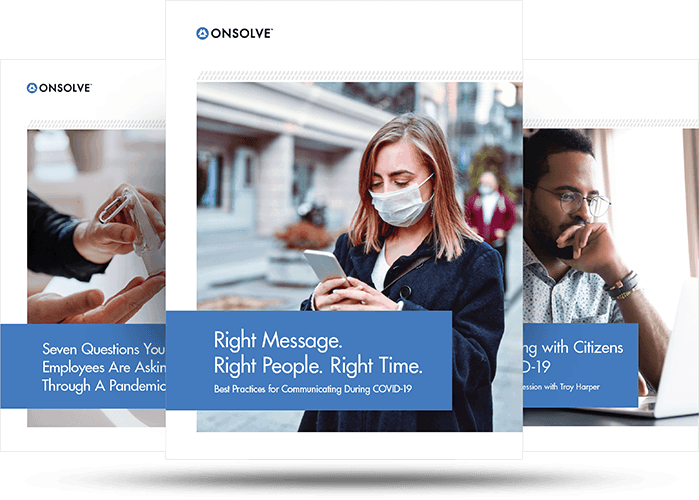Updated on 5/20/2020 to incorporate updates on COVID-19.
When your employees work together in close quarters every day, anyone who gets sick is likely to pass that illness on to at least a few others in the office – maybe more. An outbreak of any size is bound to affect your business in a variety of ways. Do you know what to expect? Do you have a plan for managing it? Whether it’s the flu, food poisoning, or something more serious, here are a few critical event management best practices for when a disease outbreak affects your workplace.
Assess Dependencies
Say a particularly nasty flu or coronavirus takes out 15% of your workforce for at least one day. It’s a small number, but still enough to cause serious upheaval throughout the company. How do you keep operations going? Do you shut down until the threat is over? Or do you outsource to another company and hire temp workers? Is there a chain of command to determine who’s in charge when management is out sick?
Perform an assessment of both your internal and external dependencies – that is, who and what your company relies on to keep running – so that an event like this doesn’t take you by surprise.
Look at Product Supply and Demand
Contagious diseases aren’t the only kind of outbreaks that can affect your business. An outbreak of E. coli, for instance, can create all sorts of problems, not just for your employees, but for your customers too. If a particular food is tainted, it has an impact on the entire supply chain.
For instance, remember the E. coli outbreak that tainted supplies of romaine lettuce in late 2018 and early 2019? It affected farms, grocery stores, restaurants, and any other business that used romaine as an ingredient in any of their foods. Furthermore, the outbreak was so well-publicized that demand for romaine continued to be reduced, even after the problem was contained.
If a product you buy, sell, or deal with regularly suddenly becomes unsafe to use due to potential illness, it’s important to look at the big picture, up and down the supply chain and determine exactly what effect the outbreak will have on your company, as well as on your customers, both now and going forward.
Determine Your Response Plan
Once you have a handle on what could go wrong, create an emergency plan to help you continue functioning when an outbreak occurs. Include emergency outsourcing partners, delegation of responsibilities in the event of a temporary loss of management, and extensive, up-to-date emergency contact information.
Make the plan scalable as well. How will you deal with the loss of 10% of your workforce? How about 15? 20%? 40%? What if the loss is localized to a specific department? How many people can you do without within a single department, or within the company as a whole, before you need to initiate your response plan? Whose decision is it to begin the response? These are all questions you need to answer when developing your plan.
Establish Alert Procedures
As with any companywide disaster, communication is key. Employees will want to know what you’re doing to limit the spread of the disease. If the office is closed, or temporarily relocated during the outbreak, you need to be able to alert them. Likewise, if there’s a flu outbreak in or near your community, you may want to reach out to your employees to encourage them to get vaccinated, and let them know where and how they can do so.
Establish a companywide critical communications system that allows you to send alerts and messages to your entire workforce, as well as shareholders and others who need to be kept in the loop. This way, you can provide important information before, during, and after an outbreak, in order to ensure everyone knows the situation and what to do. Done properly, this will help minimize productivity loss and hopefully reduce the effects of the outbreak as well, by telling people how to stay safe.
You never know when a disease outbreak may occur in your workplace or your community. The best thing you can do is simply be prepared. To learn more about how to prepare for an outbreak and create a management plan, download our white paper, Pandemic: Business Continuity Threat, Impact and Response.

Your Crisis Communication Kit for COVID-19
To learn more about the pillars of crisis response, download our comprehensive COVID-19 Communications Kit.
Download The Kit
